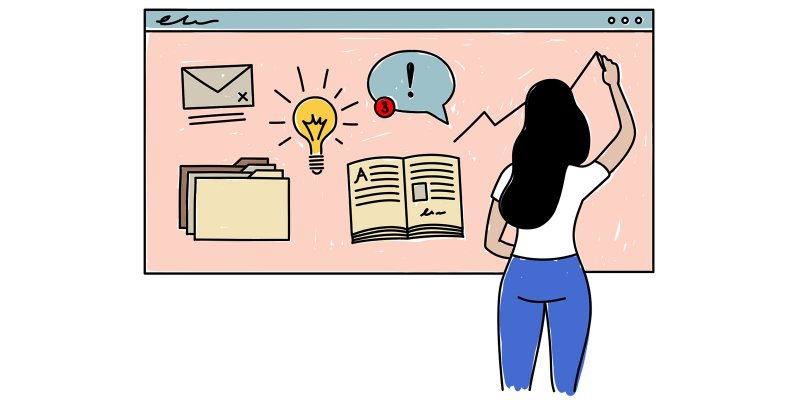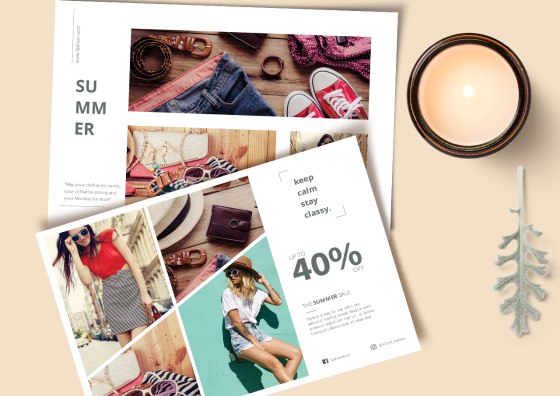You’ve planned your social media calendar, created a punchy hashtag, approved creative assets, and scheduled everything. Now, what? Amplify it!
But how? It’s time to look beyond the phone screen. Sure, social media is important. With the average person spending 145 minutes every day on social media, having a social media strategy for platforms like TikTok, Instagram, Facebook, and Snapchat in place is an integral part of an overall marketing plan.
Once a campaign has been activated, it can be easy to feel like your work is done. However, there are so many offline opportunities to build momentum and create hype around a product or service.
With so much online activity used to drive offline behaviors and almost two years of living through the screen, it’s time to consider how to make your marketing work in the new normal.
In this article, we will share how to make your marketing go further by creating an integrated, multi-channel campaign that utilizes online and offline platforms and activities to really amplify your message and get noticed in person.
What is an Integrated Campaign?
An integrated campaign means that your messaging and idea runs across more than just one channel, i.e. social media. That means that all your marketing efforts work towards the same goal cohesively, rather than each focusing on their own aims.
When your website, emails, paid advertising, and social media work together, it can be easier for audiences and customers to understand your business. Promoting a consistent message will encourage trust.
But how can you make your big idea for social media into an integrated campaign? Let’s look at what channels can best support social media activity.
How to Enhance Social Media Campaigns with Offline Marketing?
-
Landing Page
Social media content can visually capture the identity and theme of your campaign, but often, more description is required to fully explain and engage your audience.
Although there is space to expand your campaign via captions and descriptions, studies have found that 65% of Instagram users don't read captions.
So, creating a campaign landing page is the perfect place to direct your audience to a dedicated area of your website that gives more context to your campaign, and shares extra visual and written content related to your campaign.
Landing pages are also excellent places to help you analyze the success of your campaign, especially if your key performance indicators (KPIs) are data capture, email sign ups or, of course, landing page hits!
Adding forms, pop-ups, or other plugins can help you track the success of your campaign and enhance it for engaged visitors.
-
Content Is King
As well as your landing page, creating other content that supports your campaign can really amplify the message.
Ok, technically, this can be consumed through the screen, but hear us out. You may have heard the phrase ‘Content is King,’ and it’s true. Never underestimate the power of optimized organic content.
Sure, content like blogs and articles can be used within a social media content calendar (and should be!). An effective social media calendar template will certainly include such activities.
However, content within a campaign offers opportunities to be discoverable to audiences that may not be as active on social media. Conducting strong SEO research specific to your campaign can help to produce web content that is optimized.
Similarly, consider link building as a form of digital PR in the lead-up to your main campaign activity to build momentum and interest. Target key press and publications with engaging content and articles.
-
The Return of IRL Events
The Zoom fatigue is real! Virtual meetings and events mean we’re all sick of seeing through screens. Also long as safety can be ensured, it’s time to revisit in-person events.
In-person events are a great way to engage existing customers or increase brand awareness by drawing new customers to your target area. There are many opportunities to work with aligned brands on partnerships, goody bags, or sponsorships.
Consider also a hybrid event. There are several benefits to combining IRL and virtual events. Some people may still feel uneasy about attending in-person events, so having a virtual element allows them to participate in the fun.
Streaming events also means that location and distance needn’t be a barrier for people wanting to join in. Hybrid events also mean that events for press and influencers can also include customers and online audiences can feel involved.
Try looking into a cutting-edge event platform like RingCentral Events that gives you the best of both virtual and hybrid event experiences. You can use customizable landing pages, ticketing, gamification, networking, and other features to engage your IRL and online audience.
Make sure to highlight to guests and attendees the relevant hashtags to share when they post about the event on social!
Experiential Marketing
Although similar to an event, experiential marketing, or engagement marketing, does have some differences. While experiential campaigns can involve an event, they are less related to the type of event and more to interactions between the brand and the customer.
Events are often bigger, such as one-off occasions, like the opening of a pop-up shop or cocktail evening. However, smaller brand activations, like themed in-store days, a brand collaboration, or a social media take-over.
Experiential marketing is a way to allow customers and audiences to connect more deeply with the brand, and a way for brands to show their personality a bit more!
It can also help humanize the brand and is a great way to encourage customers to immerse themselves in the brand, its product, or its associated lifestyle.
Print isn’t Dead
Digital marketing is undeniably the focus now. But, for campaigns, product launches or special occasions, consider print. Much like the return of events, consumers are more appreciative of the physical now.
This too is related to physical marketing. This could be in-home mailers, catalogues or other physical collateral, like flyers or postcards. If you send deliveries and seeding print collater, it could be included ahead of the campaign, which would increase interest and excise aunt.
Think direct mail is outdated? Think again. As much as 94% of mail is opened, read, or filed. And for 70% of customers, mail gives a better impression of the company that sent it. It also gives your creative team a rare chance to make tangible marketing material and get their creative juices flowing.
Top Tips for Planning an Integrated Campaign
Although many companies and campaigns are mobile-first, there are many opportunities to bridge the gap between customers' online and offline experiences of your brand.
Planning your integrated campaign can still start with digital-first, with messaging and campaign identity. Creating your digital plan can inspire areas that you can amplify offline.
-
Creative Thinking

When creating the campaign's creative assets, remember to consider all the formats you need. While social media requires optimized vertical video and 4:5 stills, consider how this relates to your offline requirements.
An easy way to achieve this is to create images in portrait and landscape formats. This will allow them to be repurposed for different platforms or materials rather than requiring completely separate time (and budget) for each channel.
-
Timing is Key

Digital marketing has the luxury of quick turnarounds and the ability to be reactive. Print marketing and events often require much longer planning and production times.
That means, depending on the form of offline marketing you're exploring, you’ll likely need to start work offline before digital in order for it to be physically created, installed, or posted.
For integrated campaigns to have the biggest impact, having all your efforts live simultaneously will amplify and increase your visibility.
For example, if you post about your campaign on social media but your landing page isn’t ready yet, there is nowhere to direct customers. Similarly, if your event occurs before your product is ready, the momentum and excitement generated by the event will be lost while waiting for the products to be available.
Final Thoughts
Overall, social media is still central to an integrated campaign, helping to build momentum and connect multi-channel activity. But after so long living through video calls and virtual events, we’re all craving some screen-free fun.
Having an offline marketing strategy that supports and helps amplify your social media campaign can increase engagement, brand awareness, and overall customer experience.
Clear messaging, a stand-out campaign identity, and an overarching theme across online and offline marketing will mean that customers can clearly follow the story. Showcasing a relevant and unique to your brand hashtag will help customers relate all your campaign efforts to your brands.
This can be shared on social media and featured across all online and offline activities to group all your marketing together and create an impactful marketing campaign.





